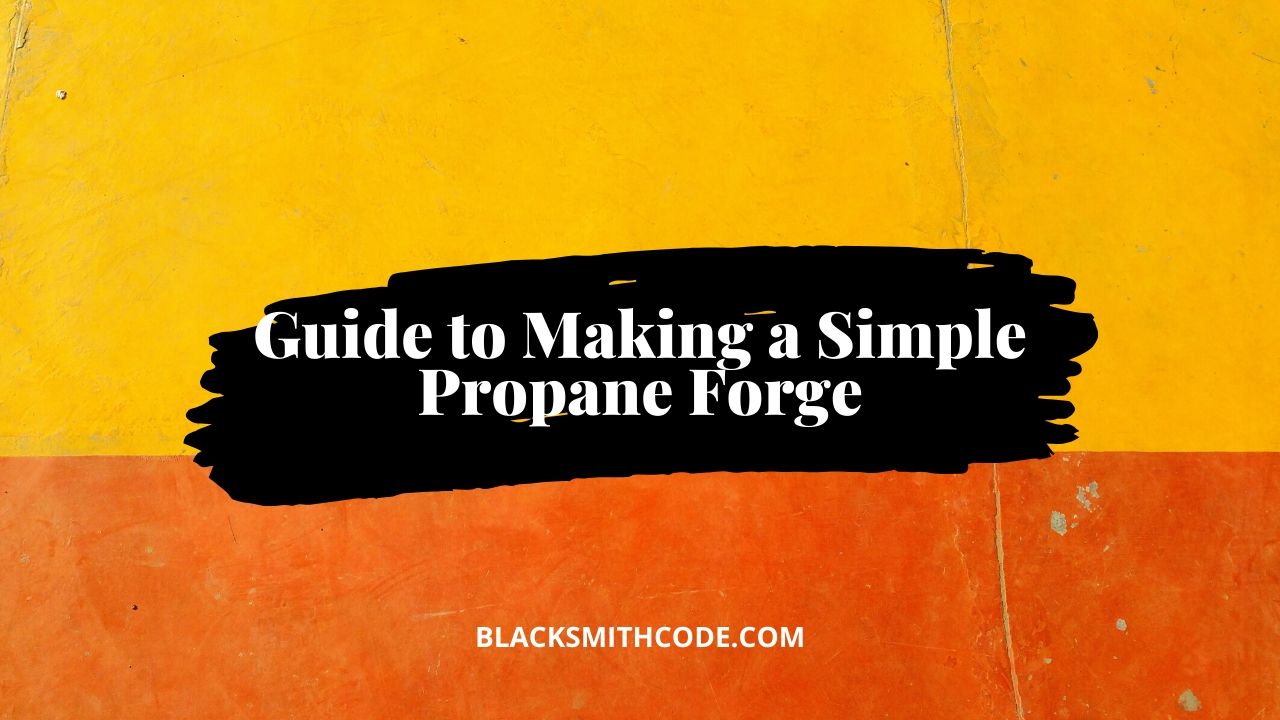Propane forges have a variety of applications. They can be made to work on smaller metal pieces or can be equipped to handle larger ones. If you’ve just started forgery and want to tinker with stuff, a tiny propane forge might be suitable for you. You don’t need to spend too much money on purchasing one. Let’s find out how to build a propane forge.
You can put one together quickly using a small propane torch and a metal cylinder with ceramic wool lining.
For a more extensive and professional application, it is recommended that you follow this guide as there are many factors involved in putting together a propane forge correctly:
Building the Burners
If you are building a propane forge, start by preparing the burner tube. Use any hollow pipe with holes on the circumference near one end. You can use a mill to drill the holes. Then make the gas accelerator to be used in the burner.
For the accelerator, take a brass nipple and force it through a metal cap by drilling a hole in the lid that almost accommodates the brass nipple.
Pro tip on how to build a propane forge
After the accelerator is attached to the burner, you need a burner choke sleeve. These are used to control the airflow, and they do it by controlling the air-fuel mixture. You can make one using an iron bar that is thicker than the burner and hollow. Attach it to the front of the stove and lock it in place with a screw. Finally, attach the nozzles, and you’re good to go.
Building the Forge Body
Your forge body should be able to keep the thermal energy in and hold the burners if you’re using more than one of them. For this, use a large metal cylinder with cutouts for mounting the heaters and openings at the ends. Identifying a suitable body is vital when learning how to build a propane forge.
Assemble the burner mounts on the top and weld them in place. After that, you need a reliable and stable base for the forge body. Use thick iron bars and create support for the main body of the forge. All that’s left now is the gas plumbing.
For that, create a mount for the pipe on the side of the main body of the forge. Assemble the hose and attach it to the mount, and you’re done.
Finishing the Forge
Finishing can make or mar your project when learning how to build a propane forge. After you’ve assembled everything, you need to coat the forge in high-temperature paint, so the color doesn’t wear off during work. Coat the whole body with color and heat treat it in an oven.
When the color is complete and dry, line the inner side of the forge with special ceramic fiber forge insulation and add refractory cement to it. You can also add fire bricks before you add the glue to make them adhere properly, but the result is the same. Your propane forge is now ready for use.
Conclusion
Learning how to build a propane forge is a priceless asset for blacksmiths. Propane forges are easy to build but can be inefficient in heating large metal stocks. A more massive sized forge means you need to put in an extra effort to assemble everything correctly. And of course, additional fuel.
As you increase the size of the main body of the forge, you may need to put in extra burners. The orientation of the forge burners should also be kept in mind as it can cause a disturbance in the airflow inside the main body of the forge.

